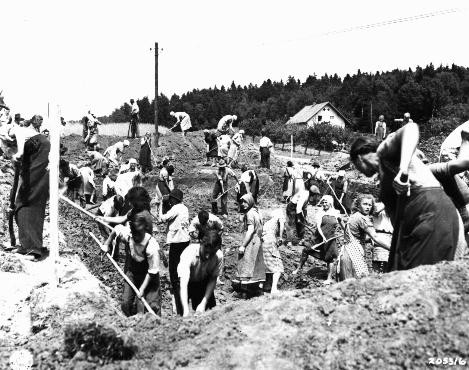
死亡行军
在战争快结束时,德军节节败退,盟军逼近纳粹集中营。苏军从东部进攻,英、法、美则从西部进攻。德国人开始疯狂地将前线附近集中营的囚犯遣送到德国境内的集中营,用作强制劳力。囚犯起初通过火车运送,随后改为步行,开始了后来人们所称的“死亡行军”。
囚犯被迫在严寒中长途跋涉,只有很少的食物和水,有时甚至没有,也得不到休息。那些坚持不住的人被枪杀。最大规模的死亡行军发生在 1944 年至 1945 年的冬季,即苏联军队开始解放波兰时。苏军到达奥斯威辛之前九天,德国人将数万囚犯带到距奥斯威辛 35 英里远的沃奇斯拉夫(Wodzislaw),在那里囚犯被押上货运列车送往其他营地。大约四分之一的人在途中死去。
在死亡行军的前后,纳粹经常成群地杀害囚犯。在波罗的海北部但泽 (Danzig) 地区的集中营里,7,000 名犹太人踏上了死亡之旅,其中有 6,000 人是妇女。在十天的行程中,有 700 人被杀害。那些活着到达海边的人,也被赶到水里遭到枪杀。

